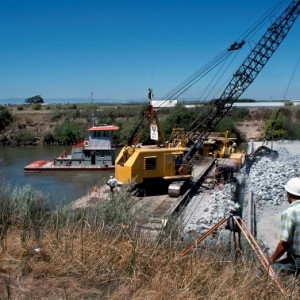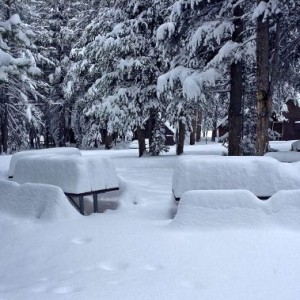Federal Water Tap, May 11: EPA Recommends Health Standards for Toxic Algae in Drinking Water
The Rundown
EPA issues toxic algae guidelines. A California congressman wants to block federal spending on river flows in his home state. Commenters want more protection for drinking water from federal oil-by-rail rules. Irrigation in the mid-Atlantic is concentrated on a peninsula. Nevada uses less Colorado River water. Asian carp won’t go hungry in Lake Erie.
“This makes a mockery of the sacrifices made by Californians who are stretching every drop of water in their homes.” — Rep. Tom McClintock (R-CA) speaking in support of his spending bill amendment to block federal agencies from purchasing water for environmental flows. The amendment passed the U.S. House.
By the Numbers
75 percent: Share of acreage under center-pivot irrigation in the North Atlantic coastal plain that is found on the Delmarva Peninsula. Parts of New York, New Jersey, Delaware, Maryland, Virginia, and North Carolina are located in the coastal plain. The peninsula is part of the Chesapeake Bay watershed, where farm runoff is a significant source of pollution. (U.S. Geological Survey)
10 percent: Reduction in Nevada’s consumptive use of the Colorado River in the first four months of 2015, compared to 2014. (Bureau of Reclamation)
Reports and Studies
Yakima River Basin Dam
The Bureau of Reclamation recommends increasing by 1 meter (3 feet) the height of a dam in the Yakima River Basin, according to a final environmental review. Raising the dam, located 145 kilometers (90 miles) east of Seattle, will add storage capacity that can be used to boost dry season river flows or meet agricultural demand.
Algae Buffet for Asian Carp
There is enough algae in Lake Erie to sustain Asian carp, an invasive species that lawmakers and businesses would like to keep out of the Great Lakes. The U.S. Geological Survey used satellite images to determine that carp species could live and thrive in the lake.
News Briefs
Toxic Algae
The U.S. Environmental Protection Agency set health standards for toxic algae in drinking water. The standards are not a regulation and are not mandatory. They will be used by utilities as a guideline for issuing health warnings. EPA estimates that 30 million to 48 million Americans use drinking water sources that are vulnerable to toxic algae outbreaks.
Oil-by-rail Rules
Rail cars that carry crude oil face an across-the-board speed limit of 50 miles per hour, a 40-mile-per-hour limit in urban areas, and safer design standards, according to final rules from federal regulators. A number of comments from environmental groups asked for lower speed limits near critical ecosystems such as sources of public drinking water supplies. Regulators said that watersheds are one factor that rail companies should consider during the route analysis, which is required annually by the new rules.
Federal Water Tap is a weekly digest spotting trends in U.S. government water policy. To get more water news, follow Circle of Blue on Twitter and sign up for our newsletter.
Brett writes about agriculture, energy, infrastructure, and the politics and economics of water in the United States. He also writes the Federal Water Tap, Circle of Blue’s weekly digest of U.S. government water news. He is the winner of two Society of Environmental Journalists reporting awards, one of the top honors in American environmental journalism: first place for explanatory reporting for a series on septic system pollution in the United States(2016) and third place for beat reporting in a small market (2014). He received the Sierra Club’s Distinguished Service Award in 2018. Brett lives in Seattle, where he hikes the mountains and bakes pies. Contact Brett Walton





Leave a Reply
Want to join the discussion?Feel free to contribute!